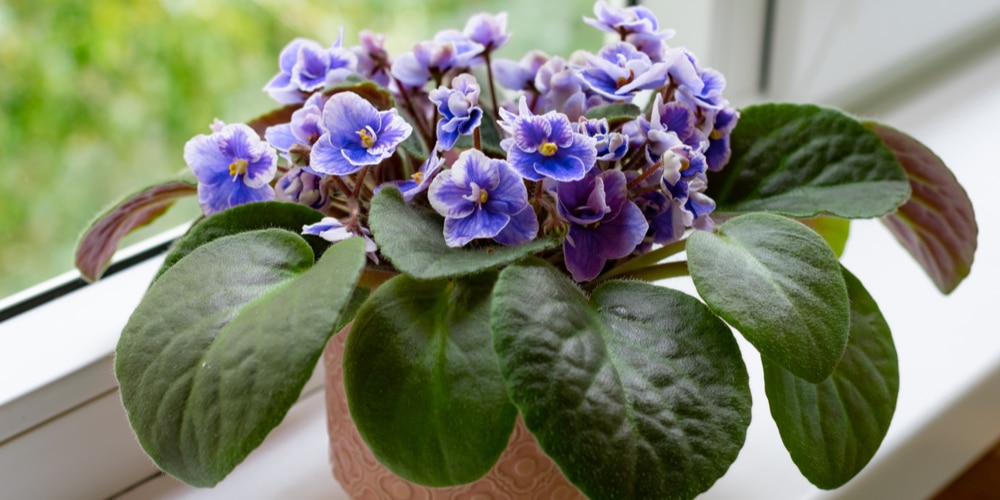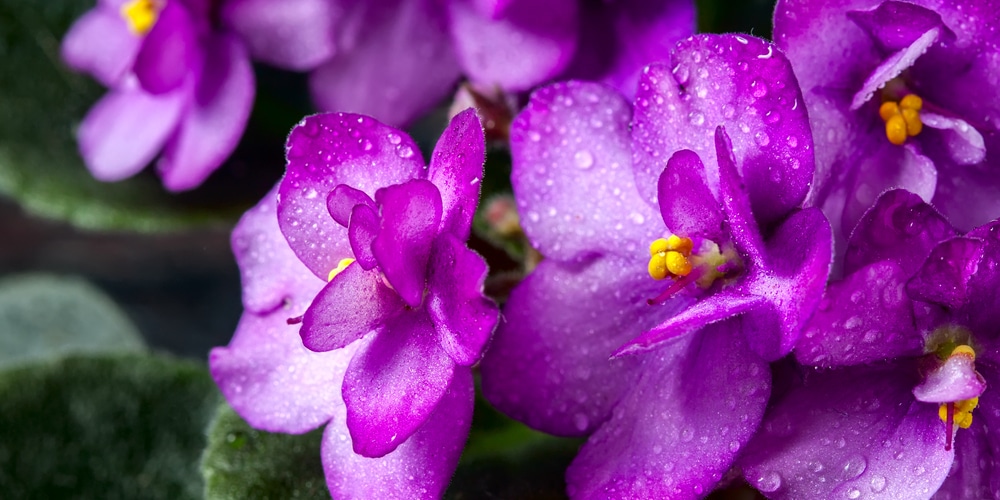African Violets may be small and dainty, but they’re relentless when it comes to bloom production. As long as you get its conditions right then you can look forward to profusions of violet, pink or white all year. Aside from getting the light and watering right, you’ll need to feed it fertilizer to keep your African violet happy. Here’s a short guide on African violet fertilizer.
Should I Provide My African Violet with Fertilizer?
The short answer is yes, you should fertilize your African violet and more so if they’re in containers.
Most plants, including African violets, draw moisture and the nutrients they need from the soil. Although they don’t really need much, a nutrient-hungry plant could very well be the reason why your African violet won’t produce flowers.
Now that you know your African violet needs fertilizing, it’s time to determine what kind of fertilizer you should use and when you should use it. Also, there’s such a thing as too much fertilizing, so we’ll tackle that as well.
The Best Fertilizers for African Violets
African violets will need fertilizing every now and then so they can be healthy and produce lots of flowers. Growers will usually put them in pots and keep them indoors, which is fine, but you will need to consider their growing requirements as well.
Plants will take up nutrients from the soil and sunlight as time goes on, and eventually they will survive instead of thrive. For African Violets, one indication that you need to fertilize is when they stop producing blooms and seem to be in a dormant state.
Fertilizers usually come in three elements, which are the main nutrients an African Violet will need to grow. Nitrogen is the most important, quickly followed by phosphorus for flowering and potassium for roots.
The good news is that you can use any type of commercial fertilizer, but it’s recommended that you get a water-soluble or liquid fertilizer.
Liquid fertilizer has the advantage of getting quickly absorbed so your african violet can get the nutrients to produce flower buds. Water-soluble fertilizers are the same thing, but you have the option to dilute them first before feeding or sprinkling them on the soil.
The best ratio for African Violets is a mix of 14-12-14. There are specific kinds of fertilizers made for the plant, so if you don’t want to second-guess then you can buy them. Make sure to read the instructions on the label so you won’t harm your plant.
Most of the fertilizers for African violet use urea, which can burn the plant’s roots. However, you can choose ammonium nitrate as an alternative, but it will be more expensive. To encourage more blooms you can choose fertilizer that’s higher in phosphorus content than the others.
Aside from commercial fertilizer you can also use organic ones, such as fish emulsion, compost tea or worm castings, just to name a few.
When to Fertilize African Violets
African violets can be fed in a number of ways and methods. The best time to fertilize your plant is during its growing season, which usually starts in early spring.
Roughly speaking, you can give your violets a shot of nutrients every time you water or once every 4 to 6 weeks.
If you intend to give your violet plant fertilizer every time you water, you should use diluted liquid fertilizer or a water-soluble fertilizer at quarter strength.
This gives your plant sustained doses to support healthy growth and flowering. The thing to keep in mind is that you water every 10 to 14 days so the fertilizer should be at least a quarter diluted.
If you plan on giving your African violet fertilizer every 4 to 6 weeks, you can give it at full strength and in liquid form. This makes fertilizer burn less likely and you won’t have to worry about giving them too much.
It’s not recommended to fertilize african violets every week as it could lead to more harm than good. Also, you should use only mineral water or tap water that’s been left standing for 24 hours to remove chlorine.
To prevent the buildup of minerals in the soil you can wash off the excess and flush them out with water that’s equivalent to four containers.
How to Feed Your African Violet
The most important thing to remember when feeding an African violet is to not overdo it. That said, you should always read the label that comes with the fertilizer you purchased and follow the directions as specified.
Feeding time for the plant is usually from spring to the autumn season, with winter as its rest period. Although it won’t be dormant like other plants it wouldn’t be able to use fertilizer either. Remember to use a fertilizer every 4 to 6 weeks or every time you water the plant.
When watering African Violets you should always avoid getting the leaves wet. If needed, you can lift up the stem and push the spout a little closer. The soft velvety leaves are prone to rot whenever they come in contact with water, and the stems quickly follow suit.
Some recommend watering from the bottom- fill a saucer with water and let your potted African Violet sit in it for an hour or two. Afterwards, throw away the excess water and your plant will have collected the water it needs through the soil and roots.
While fertilization is important, too much of it isn’t good. You will need to constantly feed your plant while keeping in mind that you should flush away the excess residue and buildup in the soil.
Every three months, do a quick flush by pouring water into the plant’s soil and container until the excess comes out through the drain hole. Continue doing until you’ve put through around three containers’ worth of water. Lastly, you can wipe the salts on the top of the soil and throw it away.
African Violet Fertilizer: Final thoughts
Meet all of an African Violet’s care requirements, including fertilization and the plant will be sure to reward you with abundant and cute blooms all year long!
You may also like: Do Rabbits Eat Clematis?

